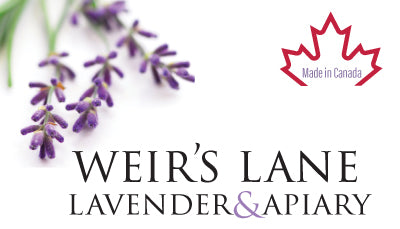Small Batch Canadian Made
Open Noon to 5 pm Wednesday to Sunday
105 King Street West, Dundas (Hamilton) Ontario
Closed Statutory Holidays.
Shop in person, or online. We provide local pick up or can to ship to you.
To Order Online and Pick Up in Dundas: select "Pick Up" Tab when checking out under shipping options.
We pay the shipping: spend $100 plus (pre-hst, Canada only). At checkout add discount code "FreeShipping" (no spaces or quotes).
Email: info@weirslanelavender.ca Phone: 905-627-9208

Visit Our Dundas Shop
Click here for directions and other information about our shop.
Directions
Contact Us

Your Source for Lavender
About Weir's Lane
We started as a lavender farm and now we're focused on creating luxurious products using pure lavender & other essential oils.
Who Is Weir's Lane: OUr Commitment to You
Do you like French or English Lavender?


